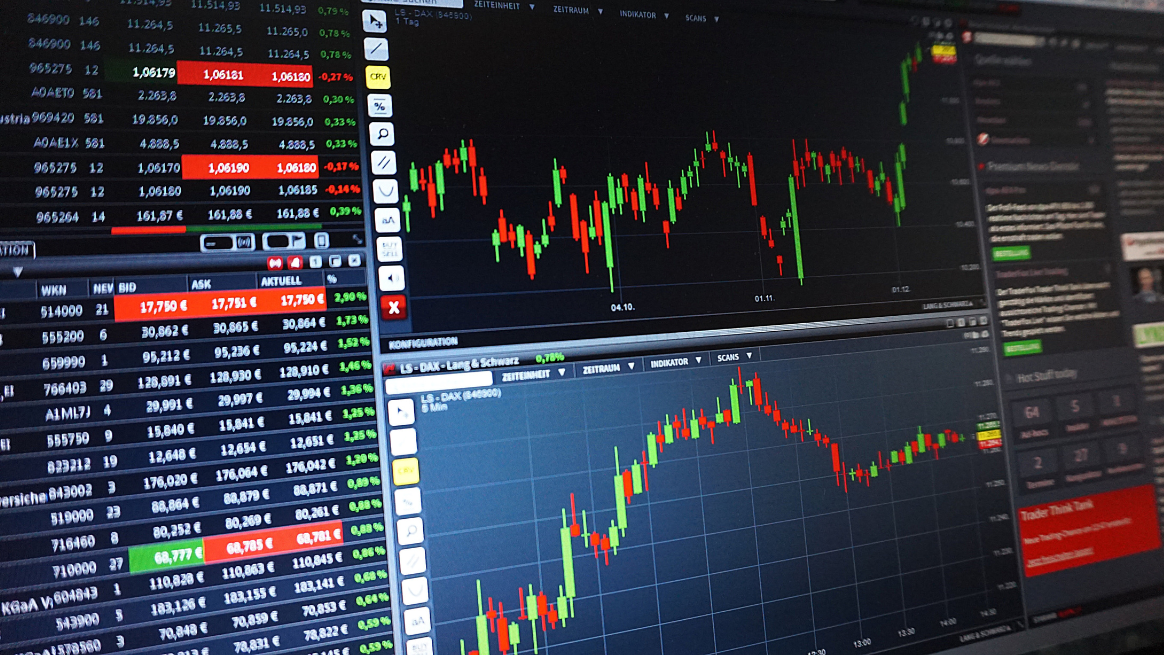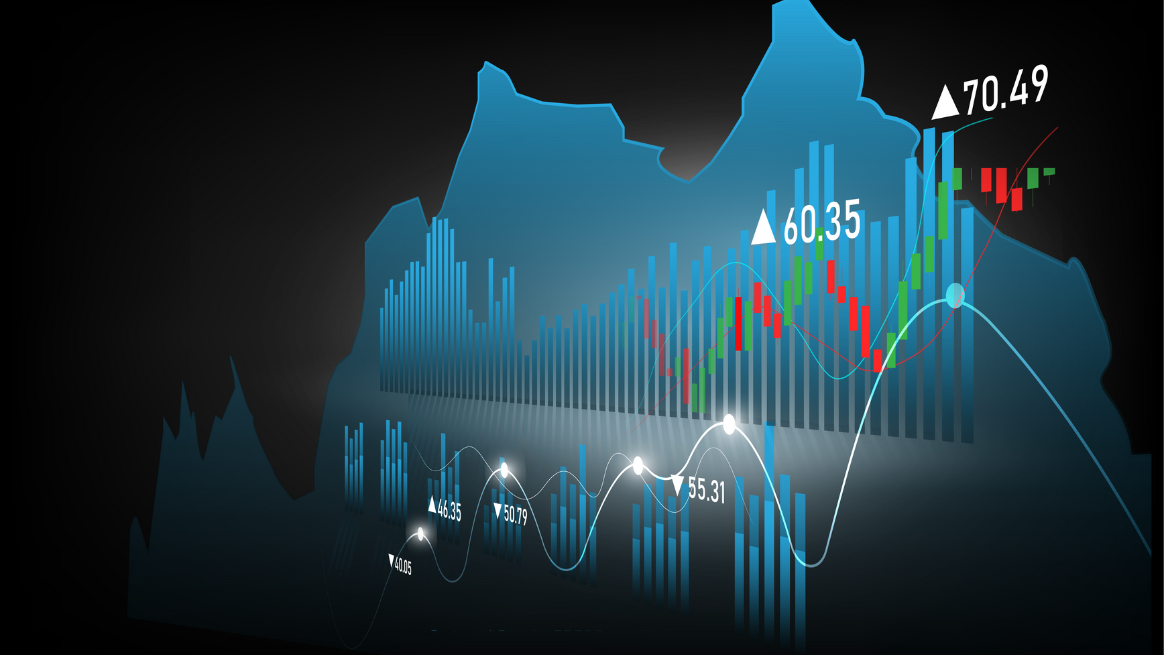

It’s no secret that the world of cryptocurrency has taken the financial markets by storm. With its unprecedented growth and volatility, crypto trading offers traders a golden opportunity to make substantial profits. Among various trading strategies, one method stands out due to its flexibility and potential return – swing trading crypto. But what is it? How does it work? And how can you become a successful swing trader in the crypto market? Strap in, as we’re about to embark on an enlightening journey through the world of swing trading crypto.
Understanding the Basics of Swing Trading Crypto


Swing Trading Crypto Explained
At its core, swing trading is a strategy that traders use to capitalize on the natural ‘swing’ of the price cycle. It involves holding onto a crypto asset for a period ranging from a couple of days to a few weeks, aiming to profit from price changes or ‘swings’. In essence, swing trading sits comfortably between day trading and long-term investing. It provides a middle ground, offering fewer transaction fees than day trading and quicker potential returns than long-term investing.
In the world of cryptocurrency, swing trading is a powerful tool to exploit the market’s volatility. Unlike traditional stock markets, the crypto markets never sleep. They are operational 24/7, providing ample opportunity for traders to catch the swing at any time of the day. So, whether the market is bullish (upward trending) or bearish (downward trending), the swing trader can make profits by timely entering and exiting trades.
Why Choose Swing Trading in Crypto?
Why consider swing trading in the rollercoaster world of cryptocurrencies? There are a few reasons:
- High Volatility: Crypto markets are notoriously volatile. This volatility, while alarming for the risk-averse, is a dream come true for the swing trader. It offers numerous opportunities to profit from significant price swings that occur regularly. The ability to both buy and sell crypto means a swing trader can make a profit, whether the price is rising or falling.
- 24/7 Market: Traditional stock markets have strict trading hours, which can limit trading opportunities. In contrast, the crypto market is always open, providing endless opportunities to find profitable trades. This 24/7 nature gives swing trading in crypto an edge over traditional markets.
- Diverse Opportunities: With thousands of cryptocurrencies available for trading, there are plenty of opportunities to find coins that are currently in their swing phase. The key is knowing how to identify these opportunities, which we will cover later in this guide.
- Potential for Significant Profits: Due to the high volatility of the crypto market, price swings can be substantial. This characteristic provides the potential for high returns on successful trades.
Remember, while swing trading crypto has its advantages, it’s not without risks. Volatility, while providing trading opportunities, can also lead to significant losses. Therefore, thorough research, careful planning, and risk management are essential.
Getting Started with Swing Trading Crypto


Choosing the Right Crypto for Swing Trading
Swing trading requires a careful selection of cryptocurrencies. Not all cryptocurrencies are created equal, and not all are suitable for swing trading. Here are a few key considerations when choosing which crypto to swing trade:
- Volatility: A cryptocurrency’s volatility refers to the rate at which its price increases or decreases for a set of returns. Cryptocurrencies with higher volatility provide greater price swings and thus, more trading opportunities.
- Liquidity: Liquidity refers to how quickly and easily a cryptocurrency can be bought or sold without affecting its price. Higher liquidity makes it easier for traders to buy and sell a cryptocurrency, making it an essential aspect for swing trading.
- Market Cap: Cryptocurrencies with larger market caps tend to be more mature and stable. They are less likely to be subject to extreme price swings. Small to mid-cap cryptos, while riskier, can offer greater potential returns due to their larger price movements.
- Trading Volume: A high trading volume indicates a high level of trader interest. High volume also corresponds to better liquidity and lower spreads, the differences between the bid (buy) and the ask (sell) prices of a cryptocurrency.
Typically, Bitcoin (BTC) and Ethereum (ETH), due to their large market cap and high trading volume, are popular choices for swing trading. However, altcoins (all other cryptocurrencies excluding Bitcoin) can also provide profitable opportunities, especially for those willing to take on a bit more risk.
Essential Tools for Swing Trading
Successful swing trading requires a solid foundation of tools and resources. Here’s what you need to get started:
- Trading Platform: Choose a reputable and reliable trading platform that supports the cryptocurrencies you want to trade. Look for platforms with intuitive user interfaces, strong security measures, and competitive fees.
- Charting Software: Tools like TradingView can help you analyze market trends and make more informed trading decisions. They provide a range of technical analysis tools such as candlestick charts, Fibonacci retracement, moving averages and more.
- News Sources: In the fast-paced world of cryptocurrency, staying up-to-date with the latest news is crucial. Use reliable crypto news sites and consider setting up alerts for the cryptocurrencies you are trading.
- Technical Analysis Indicators: Mastering a few key technical analysis indicators can greatly enhance your swing trading strategy. Commonly used indicators include the Relative Strength Index (RSI), Moving Average Convergence Divergence (MACD), and Bollinger Bands.
- Crypto Wallet: For added security, consider using a crypto wallet for storing your cryptocurrencies instead of leaving them on your exchange account. There are two types of wallets: hot wallets (online, less secure but more convenient) and cold wallets (offline, more secure but less convenient).
- Community: Join online communities of other crypto traders. Platforms like Reddit, Telegram, or various trading forums can provide valuable insights, advice, and new perspectives.
Remember, while these tools can provide valuable insights and improve your trading decisions, they do not guarantee profits. Always use them in conjunction with your own research and analysis.
The Strategy Behind Swing Trading Crypto


Technical Analysis in Swing Trading
At the heart of any successful swing trading strategy lies technical analysis. This process involves studying statistical trends gathered from trading activity, such as price movement and volume, using various charts, indicators, and patterns. The objective is to predict future price movements to make profitable trades. Here are a few key concepts in technical analysis used for swing trading:
- Trend Lines: A trend line, or simply a trend, is the directional movement of market prices. It could be upward (bullish), downward (bearish), or sideways. Identifying the trend helps swing traders get an idea of the overall market sentiment and make their trades accordingly.
- Support and Resistance: Support is a price level where there’s a strong buying interest, preventing the price from falling further. Resistance, on the other hand, is a price level where selling interest is high enough to overcome buying pressure and stall price increases. Swing traders buy at support and sell at resistance.
- Trading Volume: It represents the total amount of a cryptocurrency that has been traded during a certain period. Higher trading volumes can confirm the strength of a trend or a trend reversal.
- Moving Averages: Moving averages smooth out price data to form a trend following indicator. They do not predict price direction but rather define the current direction based on past prices. Two commonly used types are the Simple Moving Average (SMA) and the Exponential Moving Average (EMA).
- Indicators: Technical indicators are mathematical calculations based on a cryptocurrency’s price, volume, or open interest. They can help identify potential trading opportunities. Common ones include the Relative Strength Index (RSI), Moving Average Convergence Divergence (MACD), and Bollinger Bands.
Remember, no indicator is foolproof. They should be used in combination and supplemented with other forms of analysis.
Risk Management in Swing Trading
Effective risk management is just as crucial as technical analysis in swing trading. One wrong move can wipe out your entire capital. Hence, protecting your investment should be a top priority. Here are a few risk management strategies commonly employed by successful swing traders:
- Set Stop Losses and Take Profit Levels: Stop-loss orders set a specific price at which a losing trade will be closed to prevent further losses. Take profit orders do the opposite, closing a trade once it reaches a certain profit level. Both are essential tools in limiting losses and securing profits.
- Don’t Invest More Than You Can Afford to Lose: This is perhaps the golden rule of any form of trading or investing. The volatile nature of the crypto market means prices can swing dramatically in a short period. As such, only invest money that you can afford to lose.
- Diversify Your Portfolio: Don’t put all your eggs in one basket. Diversifying your portfolio across different cryptocurrencies can help spread risk.
- Keep Emotions in Check: Trading can stir up strong emotions such as fear and greed. Successful traders always stick to their plan and don’t let emotions drive their trading decisions.
- Continuous Learning: The crypto market is dynamic and continuously evolving. Successful swing traders invest time in learning new trends, strategies, and trading techniques. They also stay updated with news and developments in the crypto world.
By adopting a strong risk management strategy, swing traders can protect their capital and improve their chances of achieving consistent returns in the long run.
Frequently Asked Questions (FAQs)
1. What is Swing Trading in Crypto?
Swing trading in crypto involves buying and selling cryptocurrencies based on their price ‘swings’ or changes over a few days to a few weeks. It capitalizes on short-term price fluctuations and market volatility, making it a popular strategy in the dynamic world of cryptocurrency.
2. How is Swing Trading Different from Day Trading?
While both strategies aim to profit from price fluctuations, the key difference lies in the time frame. Day traders typically open and close trades within a single day, while swing traders hold their positions for a few days to weeks.
3. How Do I Get Started with Swing Trading in Crypto?
To get started with swing trading, you will need a reliable trading platform, good knowledge of technical analysis, and an understanding of the crypto market. A good starting point is to learn about crypto trends, price patterns, indicators, and risk management.
4. Can I Make Money from Swing Trading Crypto?
Yes, it’s possible to make money from swing trading crypto due to the market’s high volatility and round-the-clock operation. However, it’s not without risks, and there are no guaranteed profits. It’s important to have a well-planned strategy and good risk management practices.
5. Is Swing Trading Suitable for Beginners?
While swing trading can seem challenging at first, beginners can certainly adopt this strategy. It’s advisable to spend some time learning about the crypto market, technical analysis, and risk management before starting. Starting with a demo trading account can be a good way to practice without risking real money.
6. How Much Capital Do I Need to Start Swing Trading?
The amount of capital needed can vary widely depending on your trading platform, the cryptocurrencies you’re interested in, and your personal risk tolerance. However, a key rule to remember is only to trade with money you can afford to lose.
Conclusion
Swing trading in crypto can be a profitable venture given the market’s inherent volatility and 24/7 nature. It offers a balance between the short-term intensity of day trading and the long-term commitment of investing. However, like any trading strategy, it’s not without risks. Understanding the market, mastering technical analysis, making informed decisions, and practicing effective risk management are vital for success in swing trading crypto. It’s a continuous learning journey that can be both challenging and rewarding.
Remember: The information provided in this guide is for educational purposes only. It does not constitute financial advice. Always do your own research and consider your financial circumstances before making any trading decisions.


































































Your writing always provides such great value. Thanks for another excellent post!